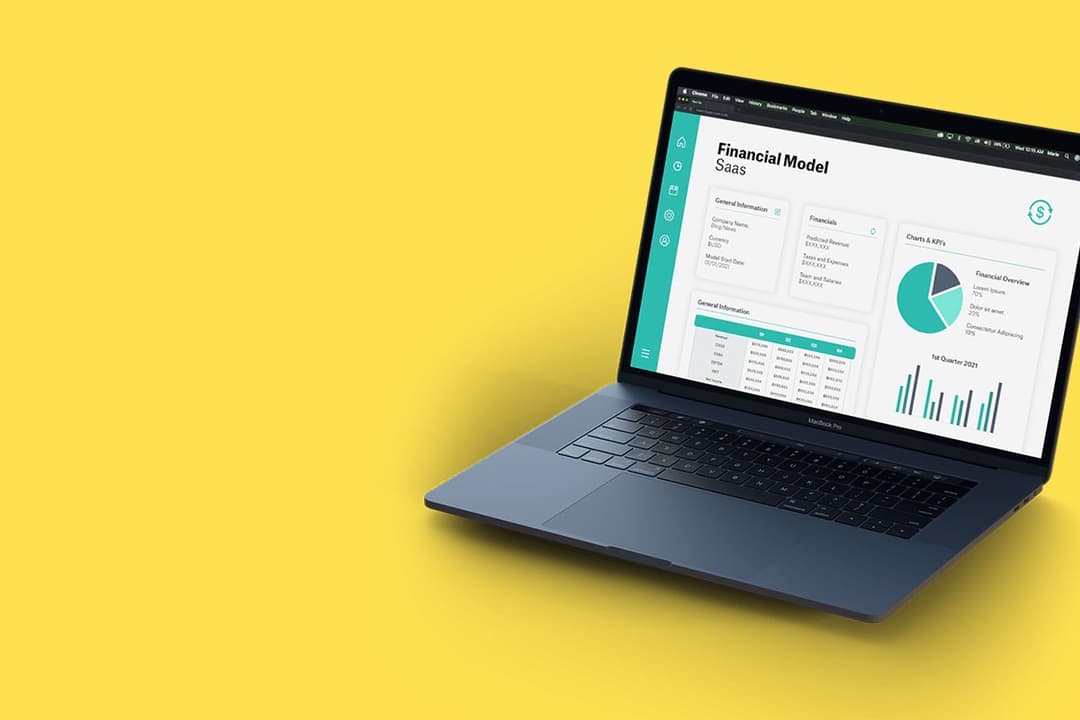YouTube. Airbnb. Foursquare. These multi-billion-dollar-generating, game-changing super brands have one thing in common: they used a pitch deck to secure millions of dollars' worth of investment, transforming them from startups to scale ups in mere minutes. A pitch deck — a 10-20 slide presentation that lets startups raise much-needed capital from investors — is the most powerful weapon in the arsenal of any new enterprise. These fundraising drives serve one purpose: to generate some serious moolah. More startups are using them than ever before, and 12 percent of investors now view a pitch deck on their smartphone. Here's how a pitch deck seals the deal in the boardroom.
“A pitch deck — a 10-20 slide presentation that lets startups raise much-needed capital from investors — is the most powerful weapon in the arsenal of any new enterprise.
Create a Narrative
Pitch decks tell a story. They identify pain points — real or perceived problems that a startup plans to solve — and gaps in a market. They suggest innovations and improvements. They take the audience on a journey, weaving a narrative that urges investors to finance a business venture.
Pitch decks should inform, entertain and persuade. In a business context, where first impressions are made in just 30 seconds, a pitch deck should impress investors from the first slide. From the first paragraph. From the very first word.
"Have you ever been on a first date and immediately decided whether you like or dislike the person you’re about to sit down with?" says Daniel Eckler, a Toronto-based author, entrepreneur and creative director. "Investors are no different. Ideally, you want them to fantasize about your ability to make them a billion dollars. A strong first slide will tip the scales in that direction."
The world's biggest brands have used storytelling in their pitch decks to drive interest, showcase their services and connect with their audience. Take Airbnb, for example. Today, the booking platform boasts 60 million users, but it was once a startup struggling for investment, another innovative idea in the crowded hospitality market. In 2009, their pitch deck changed everything: from the second slide, the San Francisco-based company identified their pain points — "Price is an important concern for customers traveling online" — and by the third, they suggested a solution. Airbnb's pitch deck communicated a strategic narrative: problem slide, solution slide, business model. They raised $600K with that presentation alone.
Like a good movie, the perfect pitch — "Pitch Perfect", perhaps? — follows a story arc. The "plot" is introduced at the beginning of the presentation and continues through each slide before reaching a conclusion. It's a Hollywood-style tragedy-turned-success story: startups introduce perceived problems in their niche — a gap in the market, frustrated customers, ignored target markets — and present a solution. The protagonist in this story — the startup — is a superhero who has come to save the day. Think Bruce Wayne in "Batman Begins." Or Rocky Balboa.
Related Read: Pitch Deck: Complete Guide to a Pitch Presentation
Slide Structure
Slide structure is crucial. Investors don't look at pitch decks for long — just three minutes and 44 seconds, according to research from file-sharing platform DocSend and the Harvard Business School — so startups need to dazzle their audience right off the bat. DocSend and Harvard's research also reveals that the average deck length is 19.2 slides — long enough to construct a narrative and influence investors, but short enough not to bore them.
Here's a pitch deck from Snapchat — a brand that collected $1.81 billion in a recent fundraising round — which was reimagined and reinvented by Slidebean. Although the original presentation emulated the social network's laid back brand persona, too much information made it difficult to read. By swapping a few slides around, the pitch deck would be leaner, tighter, and stronger.
Slides should run the gamut from identifying a problem to proposing a solution to financial projections. A value proposition, competitive analysis, and key metrics should also feature, according to Guy Kawasaki, a marketing executive who's given presentations to staff at Apple and Google.
Pitch decks need to convince investors why they should part with their cash. Startups can identify buyer personas — fictional representations of consumer archetypes that share the same behaviors, interests, and goals — for example. Slides should revolve around the customer base a company is trying to target — millennials, sports fans, high-income earners, the over 60s — so investors get a better understanding of a product or service, and how it could make a difference in the real world.
Ultimately, startups need to plot a roadmap — a long-term strategy that recognizes the brand's values, identifies sources of revenue and addresses consumer needs.
"Great startups don’t fund themselves," says Chance Barnett, an entrepreneur and investor. "Raising money from investors for your startup is challenging at any stage and requires a great pitch, even for experienced founders with significant traction in their company."
Make it Interesting
Visual aids have a huge impact on how investors digest the information in a pitch deck. A bland, boring presentation with massive chunks of text has no place in the boardroom: financiers crave vibrant graphics and colorful, creative, and compelling content. Visuals increase an investor's willingness to read a piece of content by 80 percent and content with relevant images generates 94 percent more interest than content without, according to research. Moreover, readers pay close attention to information when it accompanies images.
This pitch deck of Dwolla, an eCommere brand, uses strong, striking graphics. Each page has a clear focus — "How We Solve the Problem," "How Did We Get Here?" "How Dwolla Works" — and incorporates high-impact visuals: photos, graphs, charts, infographics. The presentation uses a color palette of dark gray and tangerine orange that grasps the audience's interest until the final slide. This 2011 presentation from KejaHunt, an online property portal, also created a buzz. The pitch deck is simple but effective: 15 slides, an abundance of stats and simple headers. The company introduces themselves in the second slide — "an online property listing platform offering an easy, credible and convenient house hunting experience" — identifies a problem in the third, and proposes a solution in the fourth. Although not as elaborate as some decks, the pitch helped KejaHunt close a seed round in 2015.
Statistics are important, too. Startups should use numbers, facts and percentages to summarize data, forecast projections or announce an important milestone — just like Tim Cook did at Apple’s Worldwide Developers Conference in 2013. "Early in the presentation, Cook announced that Apple customers had downloaded 50 billion apps from the App Store," recalls author and columnist Carmine Gallo. "Instead of simply putting the number [50 billion] on the screen, as most presenters would do, Apple designers created a visual display of the data. Since the statistic had a lot of zeroes, they decided it would be impressive to fill the screen with it: 50,000,000,000."
Finding the right visuals can be a long and laborious process for any startup. With Slidebean Create, you'll have access to a variety of templates, as well as customizable graphics that visualize data and capture the attention of investors. There is a wide range of designs to choose from, including templates for board meetings and service proposals!
Don't Forget About the Cash
While eye-catching graphics grab the attention of an audience, startups shouldn't lose sight of the real objective: a pitch deck should secure investment. Financial projections — a forecast of future costs and revenues — should fill at least one slide, so investors have a better understanding of a company's business plan. Startups should make it clear how much capital they require, too.
"Having a detailed financial model for at least the next two years will paint a picture of not only your operating expenses but also your revenue growth, margins, and potential profit over that time, as well," says Mitchell Harper, the co-CEO and co-founder of Bigcommerce, a tech brand that raised $15 million in initial investment with a successful pitch deck. "More than anything, know by department and, ideally, by business case, where you will invest the capital, and if you already have a marketing machine with a predictable ROI (i.e. $1 in brings $5 out), then explain that in detail, too."
"The truth is, unless you are a later-stage company, the numbers in your projections typically don’t matter," says Babak Yaghmaie from the legal portal Cooley GO. "But – and here’s the big but – putting together a set of thoughtful projections around your business, both on the revenue and cost side, will enhance your credibility with your potential investors."
Use Metrics
Sometimes it can be difficult to gauge the success of a pitch deck. Presentation software like Slidebean provides startups with useful metrics — in-depth insights that reveal which investors are engaging with their presentations and on what platforms. Users can track viewer activity on their slides and determine the amount of interest their business venture has generated. The result? Startups find out how long investors spent on each slide and where in the world the most interest is coming from.
Traction metrics prove useful for startups: analytics allow them to validate every component of their business model, including their financial projections. Startups soon discover which elements of their presentation work – and which don't – so they can fine tune future pitch decks for even better results.
Takeaway
The most successful pitch decks create a narrative, include financial projections, incorporate visual aids, and structure slides appropriately, so investors understand a startup's goals and objectives. These presentations let startups outline their business proposal in detail, so financiers get to know a brand before they invest. Slides should be filled with clear, concise information that gets straight to the point, full of stats and useful data that captivates an audience from the start. Startups can then check the success of their pitch decks with insightful analytics tools. Remember, YouTube, Airbnb, and Foursquare were all startups once, and their pitch-perfect pitch decks helped catapult them to superstar status.













